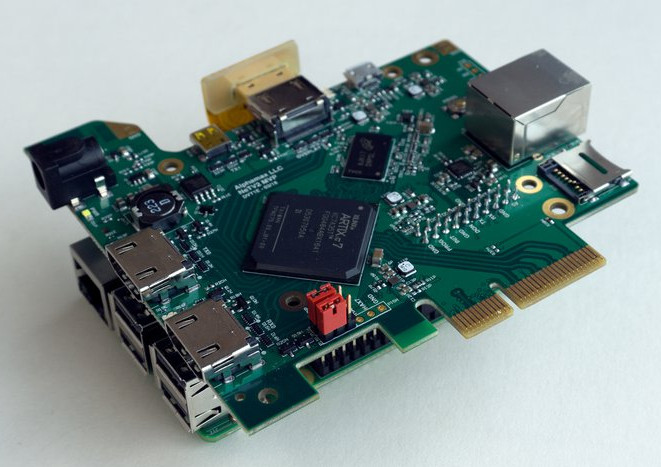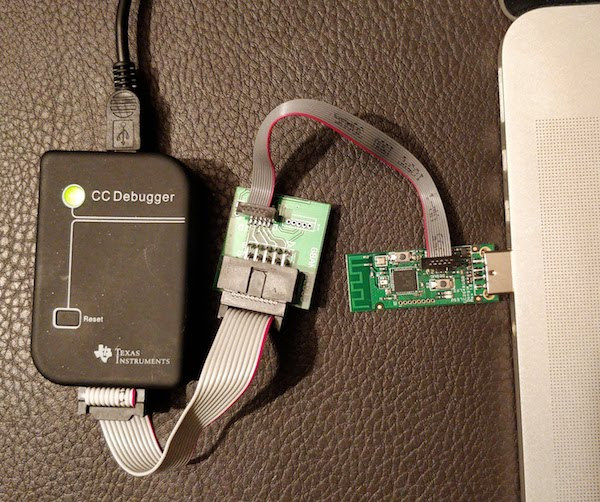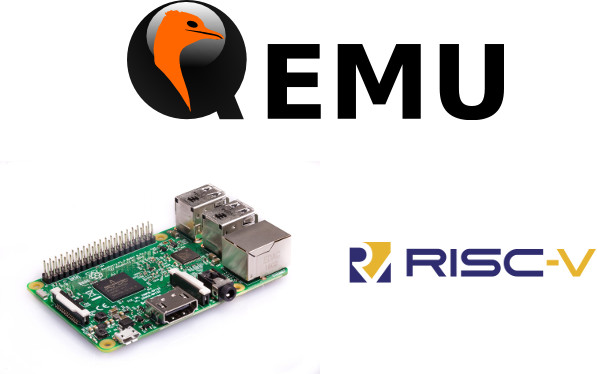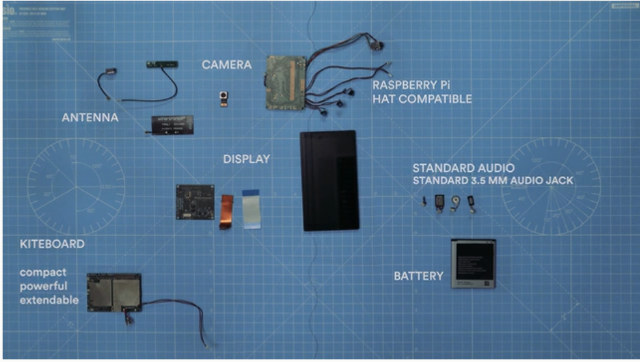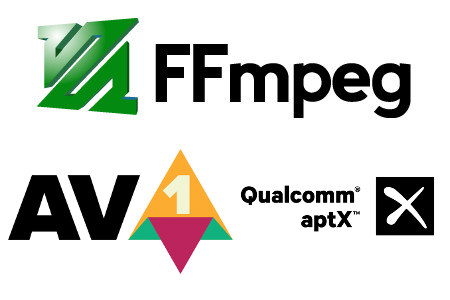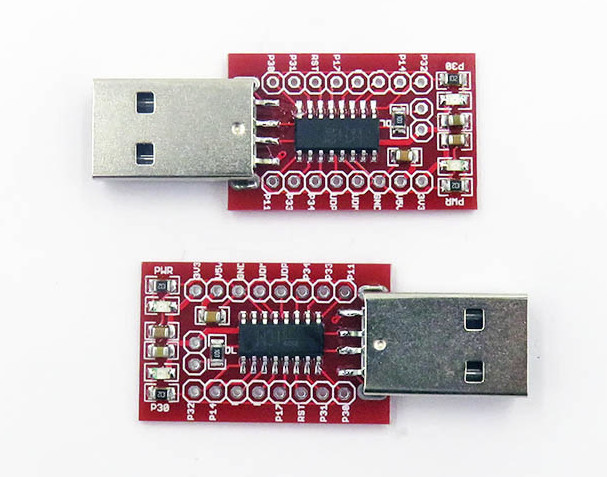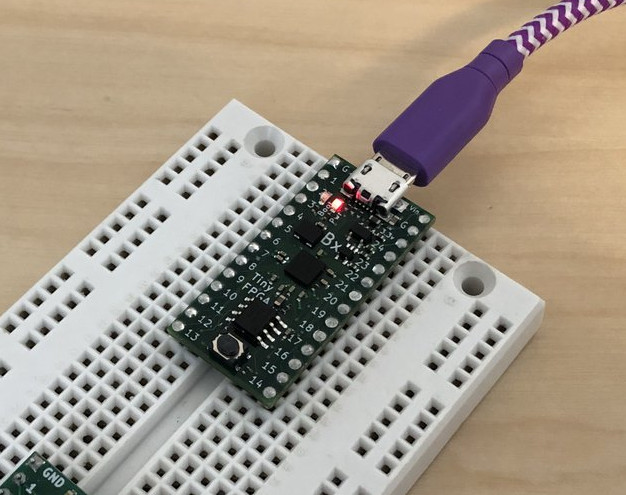Chumby NeTV was an open source hardware Linux IPTV media player based on a Xilinx Spartan FPGA and a Marvell Armada 166 processor, and unveiled in 2011. Many years have passed since then, and now Bunnie Huang has come up with a new version. The NeTV2 development board is also optimized for open digital video application, but based on a more powerful Xilinx Artik-7 FPGA, and a Raspberry Pi 3 B+ can be added for things like seamless JTAG configuration and overlay video generation. Key features and specifications: FPGA – Xilinx Artik-7 XC7A35T-2FGG484 (available with XC7A50T option during campaign only) System Memory – 512 MB RAM, 32-bit wide DDR3-800 Storage – micro SD card, 8 MB SPI flash Video Ports 2x HDMI type A inputs 1 x HDMI type A output 1 x HDMI type D output. One input/output pair configured for in-line ‘NeTV mode’ video filtering. Max Video Bandwidth […]
Two Interesting Projects on Github: Zigbee to MQTT bridge & “Deep Painterly Harmonization”
Hey Karl here. I thought I would try and showcase some GitHub projects that I run into that seem interesting or fun. This week I will start out with 2 projects. Zigbee to MQTT bridge The first one today is a Zigbee to MQTT bridge. Previously we did a couple articles with 433MHz bridges for home automation, a diy RF bridge and one by Sonoff. This bridge is similar but with Zigbee. Unfortunately 433MHz typically have one way communications, and when a message is sent there is no response and the system has to assume the message is received. Zigbee is a 2 way protocol and an acknowledgement can be sent back. The code is moving fast right now and blowing up my GitHub notices. It is a little bit of a mystery on how this works right now with the parts list, but seems to be working for some […]
QEMU 2.12 Released with Raspberry Pi 3, RISC-V Support
QEMU is open source machine emulator and virtualizer, which I used in the past at a time when Arm boards were more expensive or hard to get than today, and more recently I tested RISC-V Linux using QEMU (fork). QEMU 2.12 has now been released with some interesting new features including RISC-V support, and initial support for Raspberry Pi 3 machine model. The Changelog is rather long, but some other notable changes include: Cortex-M33 Armv8-M emulation, used by the new mps2-an505 board. Support for various AArch64 v8.1/v8.2/v8.3 extensions. Initial support for Raspberry Pi 3 machine model i.MX7 SoC and i.MX7 Sabre board emulation. Spectre/Meltdown mitigation support for x86/pseries/s390 guest Intel IOMMU support for 48-bit addresses Many SD card emulation cleanups and bugfixes. Etc.. You can get the source code and build instructions in the download page. If you are interested in running Debian on RPI 3 model, or/and want to […]
Ubuntu Touch to Be Officially Supported on Librem 5 Open Source Smartphone
Ubuntu Touch looked really promising as a Linux mobile operating system supporting mobile desktop convergence, so eventually some people would have been able to use a single device for their mobile and desktop needs. If was not for lack of trying, but sadly Canonical had to end the development of Ubuntu Touch due to lack of interest from phone manufacturers and the community at large, focusing their resources instead of the cloud and IoT. But some people were still very enthousiastic about Ubuntu Touch, Unity and convergence, so since the code was open source, UBPorts continued working on Ubuntu Touch on their own. UBPorts developers have now collaborated with Purism to make Ubuntu Touch one of the officially supported operating systems for the Librem 5 smartphone. Librem 5 will still ship with GNOME based PureOS, but Purism will support customers who want to easily install Ubuntu Touch or PureOS with […]
Kite is an Open Source Hardware Android Smartphone Powered by Snapdragon 450 Processor (Crowdfunding)
Kite is an open source hardware Android phone kit specifically targeting makers which you can assemble yourself into a Kitephone. The phone is based on a Qualcomm Snapdragon 450 mainboard (Kiteboard v2), and comes with a 720p touchscreen display module, a 12MP camera, antennas, buttons, a 3,000 mAh battery, and a Raspberry Pi HAT compatibility board to optionally interface to external hardware. Kiteboard v2 specifications: SoC – Qualcomm Snapdragon 450 octa-core Arm Cortex A53 @ 1.8 GHz with Adreno 506 GPU System Memory – 2 GB RAM Storage – 16 GB storage + microSD card slot Connectivity Cellular LTE Cat. 6/3G/2G, 2x nano SIM slots (dual-SIM dual standby) Two variant North America with LTE FDD Bands: 2,4, 5, 7, 12, 13, 14, 25, 26 LTE TDD Bands: 41 WCDMA 850, 1700, 1900, 2100 GSM 850, 1900 Rest of the World (Europe, Russia, etc…) LTE FDD Bands: 1, 3, 5, 7, […]
FFmpeg 4.0 Released with Initial AV1 Support, aptX, etc..
Whenever you are playing videos on a machine running Linux, Android or Windows, chances the software is at least partially using code from FFmpeg, a free software project that produces libraries and programs for handling multimedia data. The developers just outed a new major release FFmpeg 4.0 “Wu” which adds new filters, more hardware features, drops Windows XP and ffserver, implements initial AV1 codec support, aptX, TiVo ty+, and more. FFmpeg 4.0 includes the following libraries version:
|
1 2 3 4 5 6 7 8 |
libavutil 56. 14.100 libavcodec 58. 18.100 libavformat 58. 12.100 libavdevice 58. 3.100 libavfilter 7. 16.100 libswscale 5. 1.100 libswresample 3. 1.100 libpostproc 55. 1.100 |
and some of the main changes include: Bitstream filters for editing metadata in H.264, HEVC and MPEG-2 streams Experimental MagicYUV encoder TiVo ty/ty+ demuxer Intel QSV-accelerated MJPEG encoding & overlay filter native aptX and aptX HD encoder and decoder NVIDIA NVDEC-accelerated H.264, HEVC, MJPEG, MPEG-1/2/4, VC1, VP8/9 hwaccel decoding mcompan & acontrast audio filters OpenCL overlay filter video mix filter video normalize filter audio lv2 wrapper filter VAAPI MJPEG and VP8 decoding […]
$1.80 CH551 Mini Development Board Features 8-bit C51 Core, USB Interface, and I/Os
Last year, WCH (Nanjing QinHeng Corp.)’s launched a CH55x family of microcontroller based on an 8-bit C51 core with a USB interface, and extra I/Os depending on the selected part number Electrodragon is now listing a tiny USB development board based on CH551 for $1.80, and the chip itself sells for as low as 1.60 RMB (0.25 USD) on Taobao. Specifications: MCU – WCH CH551 8-bit C51 micro-controller USB – 1x USB type A port I/Os – 18 through holes exposing all I/Os from the MCU including GPIOs, USB, 3.3V, 5V GND Misc – On-board power led, user LED (P3.0) Power – 5V via USB port (or pin?) You won’t need an external hardware – such as a USB to TTL board – to program the boards since the MCU supports USB. To enter into programming mode, short connect the two pins in the middle of the board (DL) with […]
TinyFPGA BX is a Tiny Open Source Hardware iCE40 FPGA Board that Fits into a Breadboard (Crowdfunding)
Last Friday, I wrote about Fipsy, a $10 breadboard-friendly FPGA board powered by Lattice Semi MachXO2 FPGA with 256 LUTs, but I then remember I had covered a board somewhat similar with TinyFPGA board last year based on either the same MachXO2-256 (TinyFPGA A1), or a slightly more powerful MachXO2-1200 FPGA (TinyFPGA A2). It happens the developer is now running a crowdfunding campaign on Crowdsupply for TinyFPGA BX board, which can be used with a breadboard, and is powered by Lattice Semi ICE40LP8K FPGA that will offer more flexibility thanks to 7,680 LUTs. TinyFPGA BX specifications: FPGA – Lattice Semi ICE40LP8K FPGA with 7,680 four-input look-up-tables, 128 KBit block RAM, Phase Locked Loop Storage – 8 MBit of SPI Flash Expansion 2x 14-pin header for I/Os, GND and Vin 21x solder pads on back of the board USB – 1x micro USB 2.0 FS port for programming Oscillator – 16 […]


